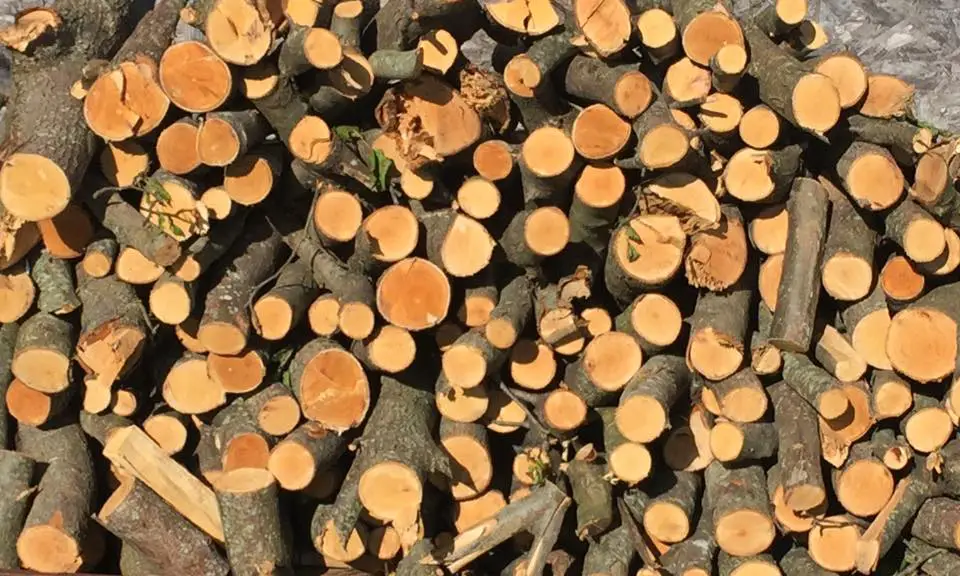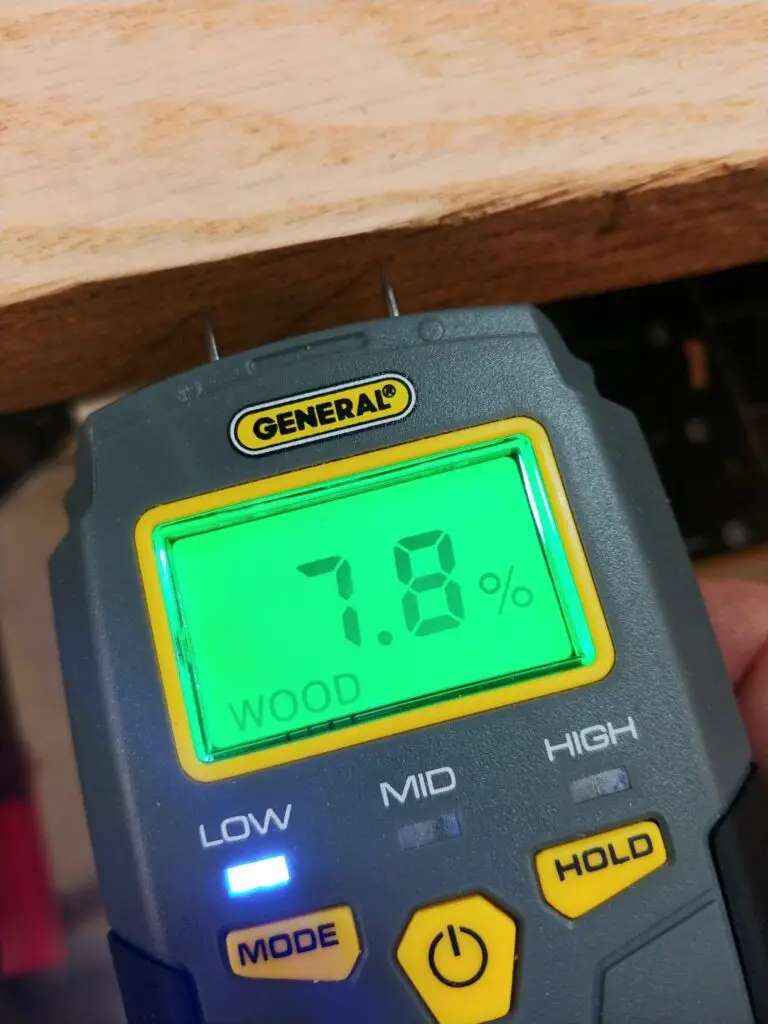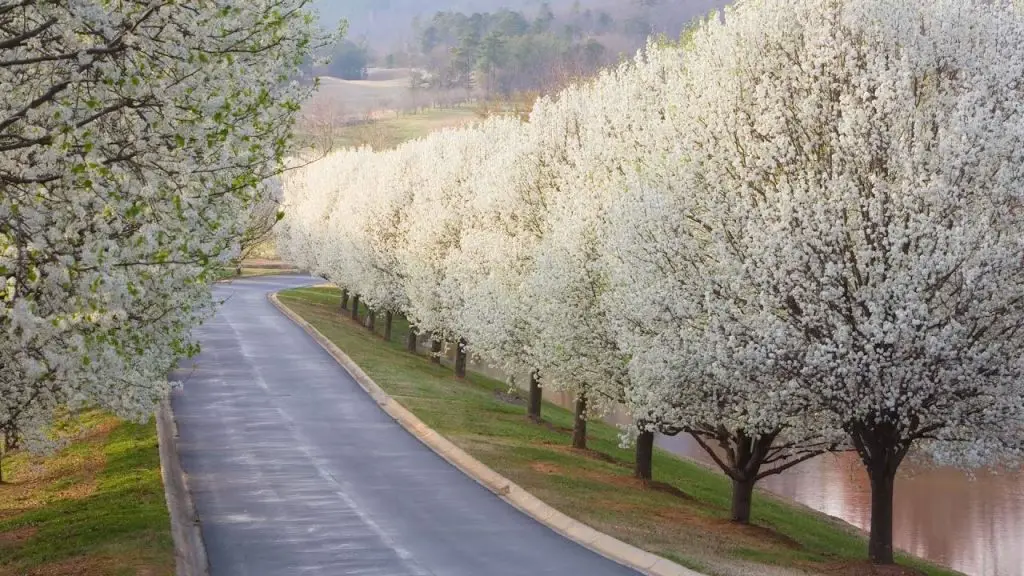The most common type of pear firewood is Bradford Pear, and it is an excellent firewood choice due to its high availability, density, and heat production.
Bradford Pear is a species of pear tree that is originally native to China and Vietnam, but has been planted across the world. While it’s technically a fruit tree, the pears from a Bradford Pear aren’t edible. The blossoms on this tree also have a terrible odor that some people have compared to rotting seafood.
Despite that, the Bradford Pear is a dense hardwood that burns clean and hot. This tree grows quickly, which means it’s also fairly available on the firewood market. While not as common as oak, it’s yet another option for folks looking to add to their firewood pile.
Table of Contents
Summary
- Heat Production: 26 million BTU/cord
- Weight: 5,504 lb/cord green
- Seasoning Time: 12-24 months
- Splitting Difficulty: High
- Sap Content: Low
- Smoke: Low
- Smell: Neutral
Bradford Pear is a dense wood with a BTU similar to Bur Oak, and higher than Maple’s 25 million BTU/cord. Bradford Pear isn’t expensive, either. A cord usually costs around $120, depending on where you live and purchase the wood.

Heat Production
Bradford Pear burns hot, making it a good choice for indoor and outdoor burning. It has a BTU rating of 26 million BTU/cord, which is as high – or higher – than some varieties of oak. This high BTU rating helps Bradford Pear burn clean, as well. It creates little ash and doesn’t create much creosote, either.
Smoke Generation
Since Bradford Pear doesn’t have a high sap content, it generates little smoke. This makes it a good choice for indoor stoves and fireplaces, provided you already have good ventilation. Pear won’t cause excessive creosote buildup, either. What smoke Bradford Pear does give off has a neutral smell, which is another feature that makes this a good indoor firewood.
Seasoning Time
Like many fruit trees, Bradford Pear can have a high sap content if harvested during the spring. Its sap content is lower if it’s harvested during fall or winter. Since the sap content varies, the seasoning time for Bradford Pear varies, too. You should give it at least 12 months to dry to 20% moisture, but depending on when the wood was cut, it can take as long as 24 months to properly season.
A moisture meter will be a valuable tool for testing your Bradford Pear, and other woods. They’re relatively inexpensive and make determining moisture content a simple process. You should be able to find a moisture meter within a reasonable budget.
I personally recommend this General Tools Moisture Meter. It allows you to accurately gauge how wet your firewood is and whether it is sufficiently seasoned. Over time you can also see how quickly the moisture is dropping and how much longer you need to keep your firewood dropping until it is seasoned and ready to burn.
Press the sharp pins into the wood and you will quickly see the readout show the moisture ranging from 5% to 50%. It also has a Low/Mid/High indication depending on whether the wood is dry enough, so you don’t need to remember the actual values.

Burning Smell
Bradford Pear has a neutral burning smell, if burned when properly seasoned. Wood that hasn’t reached the 20% moisture threshold for firewood will have a fruity scent when burned. Burning wood that isn’t properly seasoned reduces the heat efficiency of the wood, can lead to excess creosote buildup, and cause other potential issues in an indoor stove or fireplace.
If you are especially interested in odor for smoking meats or if you are sensitive to smell, have a read through this guide I have written about the best smelling firewoods to burn.
Creosote Buildup
Creosote is a black ash that’s made up of unburned wood particles. Creosote is commonly caused by burning green softwoods – like pine – which are common sources of kindling. This creosote builds up in chimneys and fireplaces, and it’s a safety hazard since the unburnt wood particles are combustible. So, you should try to burn woods that create very little creosote to minimize creosote buildup in your chimney, stove, or fireplace.
Bradford Pear generates little creosote. This is a dense, hot-burning hardwood. These types of woods generally create little, if any, creosote. You’ll also find that Bradford Pear fires also leave behind a small amount of ash.
Splitting Difficulty
Surprisingly, Bradford Pear is a difficult wood to split. This wood forms a lot of knots, especially in the branches. That makes it hard to split cleanly, especially after properly seasoned wood.
If you find straighter sections with few knots, that wood will split easier. Even then, Bradford Pear is tougher to split because it’s such a dense wood. You’ll want a sharp axe and good technique when splitting Bradford Pear.
Different Types/Species
While many species of pear trees exist, the Bradford Pear is the one used for firewood.
Bradford Pear is native to China and Asia but has since been transplanted around the world. It’s popular across America because it grows a rounded, symmetrical canopy. Thanks to their shape and blooms, you’ll probably see them growing near shopping malls, schools, universities, and roadways. The blooms have a downside, though. They produce a smell that some people compare to rotting seafood.
The tree grows quickly and grows to a decent size of 30-40 feet tall. However, these are short-lived trees for about 25-30 years.
A Bradford Pear’s branches grow at a sharp angle up and away from the trunk, contributing to the rounded shape. That makes the branches more susceptible to damage, though. Often, the branches break off during heavy wind or snow events.
Since the Bradford Pear grows quickly and in all climates, it’s a relatively popular firewood.

Comparison to Other Woods
Bradford Pear compares favorably to other popular firewood like oak or maple. It has a high BTU rating but is tougher to split than other hardwoods. The low creosote, neutral-smelling smoke, and its affordability make Bradford Pear a good choice for indoor fireplaces and stoves.
| Firewood | Million BTU/Cord (source) | Ease of Splitting | Coals | Overall Quality |
| Bradford Pear | 26 | Hard | Excellent | Excellent |
| Bur oak | 26 | Easy | Good | Excellent |
| Maple | 25 | Easy | Excellent | Excellent |
| Osage Orange | 32 | Easy | Excellent | Excellent |
The only real problem with Bradford Pear is its splitting difficulty. Even when seasoned, it’s a tougher wood to split because it’s so dense and prone to knots. You’ll want to ensure you’re using the right tools and technique when splitting this wood. Its price and availability make it a great option if you’re looking for something other than oak or hickory to burn.
Frequently Asked Questions
Can you burn Pear in a firepit outdoors?
Yes, Bradford Pear is a great wood to use in an outdoors firepit. This wood burns clean, with little smoke. The smoke that’s produced has a neutral smell, which makes this a great wood for use in backyard firepits.
Is it safe to burn pear firewood in a fireplace indoors?
Yes, Bradford Pear is a great wood to use in an outdoors firepit. This wood burns clean, with little smoke. The smoke that’s produced has a neutral smell, which makes this a great wood for use in backyard firepits.
How much does pear firewood cost to buy?
Bradford Pear is affordable firewood that costs about $120 per cord, which is on par with other firewood choices. Since Bradford Pear grows quickly and in many places across the country, it’s usually available in most markets.
Conclusion
Overall, Bradford Pear is an excellent choice for firewood. It’s a hot-burning wood that gives off little smoke, produces almost no creosote, and leaves a small ash behind. It’s high BTU rating makes it compare favorably to oak in terms of heat production. At $120 per cord, Bradford Pear is an affordable wood choice if you want to add variety to your firewood.
